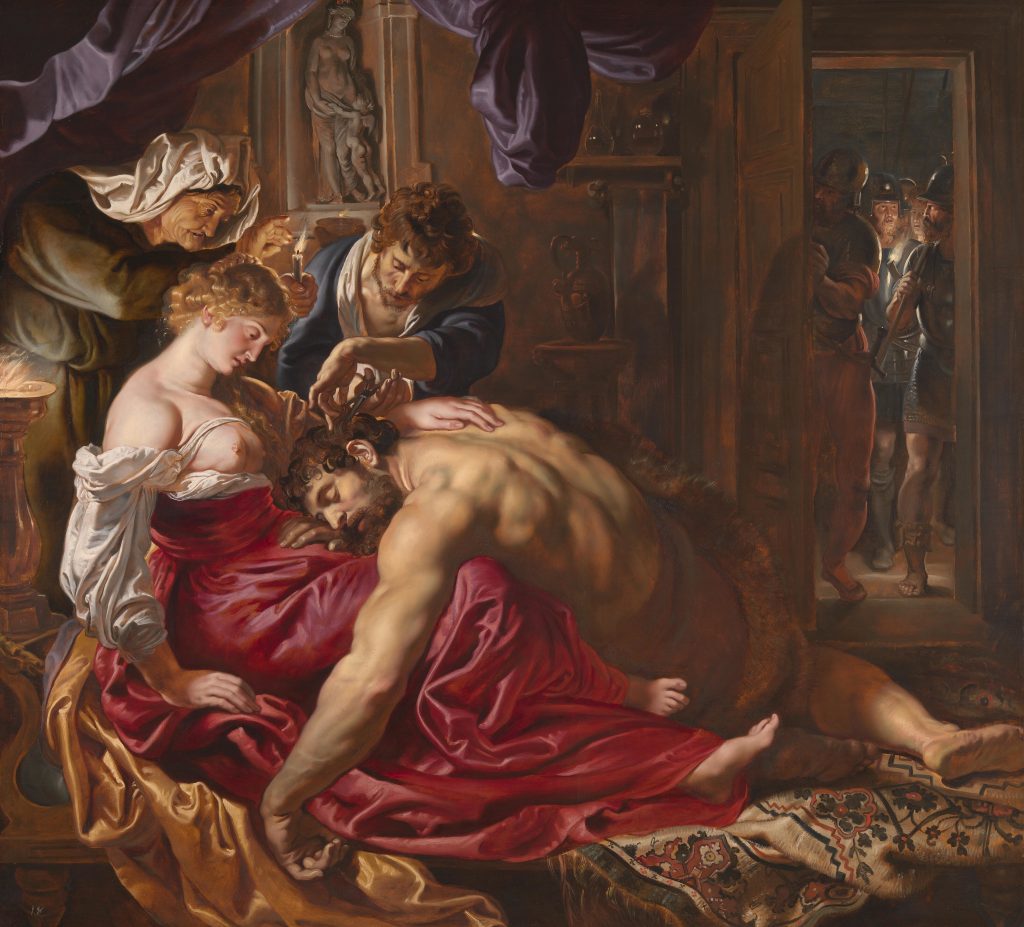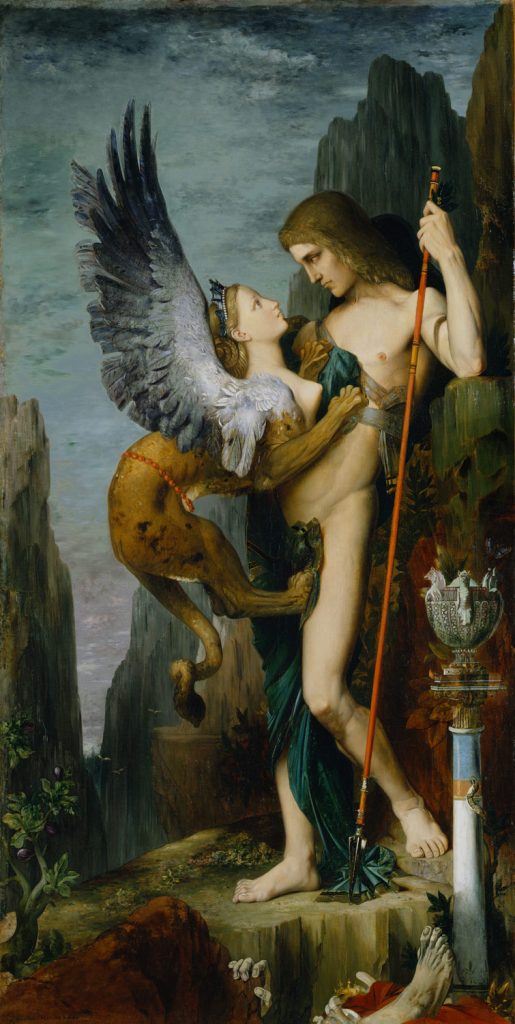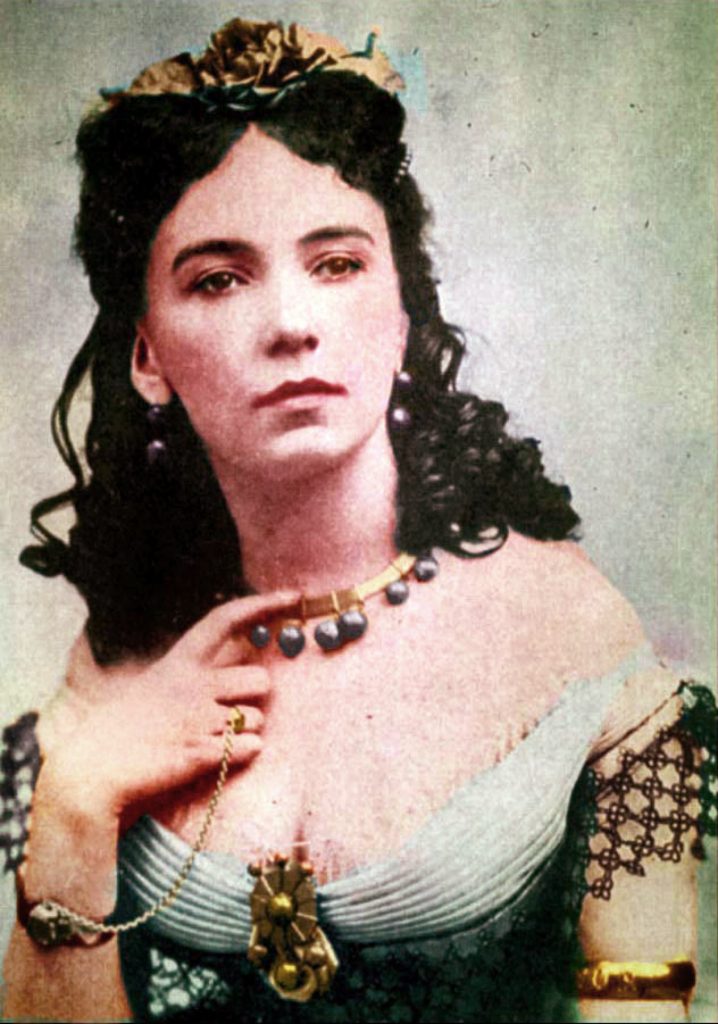According to an ages-old lex non scripta, beauty alone is an affirmative defense to any criminal charge, even premeditated murder. A seductive woman who is aware of her privilege is dangerous to her lovers. We know her kind from legend, the Bible, fiction, true crime, and film. For four hundred years, we have called her a femme fatale.Some of the ancients believed that beautiful women are venomous, and early stories of the femmes fatales who live and kill among us describe them as literally poisonous. The Greek philosopher Socrates is said to have warned that a beauty’s kiss was deadlier than a spider’s venom. “What do you think you would suffer after kissing someone beautiful? Would you not immediately be a slave rather than free?” asked Socrates. “I counsel you . . . whenever you see someone beautiful, to flee without looking back.”
Classical literature is filled with infectious damsels and dead heroes. “The betrayal of a king or hero by his mistress is, in short, a story both old and popular,” writes historian Wolfgang Lederer, “and many a man has actually lost his life because of it: from Samson who lost his hair and hide through Delilah, to the various victims of Mata Hari and her successors of today. . . . The ‘demon woman’ is a mythological type, and appears either as the companion of the enemy, or as the seductress of the hero; she sleeps with him—or at least promises to—and kills him.” The old tales always depicted the femme fatale as a grown woman, not a girl. “Since the World began, Lilith has been a mature woman,” observed an aesthete. “In history and literature the Dangerous Woman was always the Older Woman.”
Among the faded legends from that ancient time are the stories of immortals who were beautiful and terrible and who were specifically infamous for slaughtering men. They were Medusa, a great beauty before a curse made her visage fatal to men; Circe, who lived in a cave and turned men into swine; the Sirens, whose promising calls led sailors to shipwreck; the Irish goddess Anu, who lived in a cave and ate men alive; Scylla, the six-headed bitch who lived in a cave and ate sailors alive; Lilith, the night demon with a ravenous appetite for men; Kali, the Hindu goddess and slayer of men; and even Aphrodite, otherwise known as Venus. It is easy to forget that the ancient goddess of love and sex also commanded every woman on the island of Lemnos to murder her husband. According to the old stories, they obeyed her command. Cave amantem was the saying of the ancients—of her love, beware.
The Bible also regales us with accounts of toxic beauties, from Eve who tempted Adam to the alluring descendants of Eve. Judith, a beautiful widow, adorned herself with ribbons, rich perfumes, and fine jewels to seduce the enemy’s general Holofernes, and then she beheaded him with his own sword. Delilah bewitched and then betrayed her lover Samson to the Philistines for twelve hundred pieces of silver, becoming a wealthy woman. Salome danced for Herod and demanded the head of John the Baptist, murdering by proxy with sex appeal alone. They have served ever since as synonyms for fatally seductive women and as the muses of innumerable artists, immortalized in oil by the likes of Caravaggio, Klimt, Rubens, and so many others drawn to the junction of beauty and bloodshed.
 Samson and Delilah by Peter Paul Rubens (1609). (Public domain, via Wikimedia Commons.)
Samson and Delilah by Peter Paul Rubens (1609). (Public domain, via Wikimedia Commons.)
As wicked and fascinating as these legendary women have always been, the most frightening examples of the “fairer sex” are to be found not in old stories but in the case law. Our collective legal history teems with larger-than-life women who committed outrageous acts and whose good looks are the only explanation for the illogical outcomes of their cases.
CITY OF ATHENS VS. PHRYNE (336 BC)
First Recorded Instance of a Successful Beauty Defense
Modern historians assure us this old trial report is probably true. In Athens, Greece, twenty-four hundred years ago, Phryne, thirty-five, a famous courtisane, which we can generously translate as a woman of many lovers, was charged with impiety and put on trial. The mandatory penalty was death. The case went badly for Phryne. When it became apparent that she may lose her life, her attorney Hypereides, who was also one of her many lovers, took desperate measures. She had no other defense. He pulled off her robe under which she wore nothing and showed the judges her beauty bare. Silently pleading on behalf of all mankind, he studied the reaction of the officials to the sight of Phryne’s body. Moved by her, undoubtedly experiencing émotions complexes, officially moved by pity, the judges acquitted the lovely defendant.
The legend of Phryne’s physical form survives today in oil and marble. Botticelli and many others have painted her, and she was rumored to be the inspiration for the most famous sculpture of Aphrodite, goddess of love (and, lest we forget, goddess of husband-slaughtering). In more literate times, her name was a euphemism for nudity; one could be said to appear “as Phryne before the elders.” In criminal history, she serves as a symbol of that barest of defenses—feminine attractiveness.
 Oedipus and the Sphinx by Gustave Moreau (1864). (Public domain, via Creative Commons.)
Oedipus and the Sphinx by Gustave Moreau (1864). (Public domain, via Creative Commons.)
Thousands of years later, a lawyer in France rested a light hand on the shoulder of a certain American stunner to be named later. Turning to the men in the jury box, he declared, “Elle est trop belle pour etre mauvais” (she is too beautiful to be bad). He did not have to disrobe her to make his point. The jury indeed acquitted her of fatally shooting her husband.
The sordid story of a lovely woman, a weapon, a dead man, and an acquittal has played itself out in courtrooms across the globe, on front pages around the world, for generations. Regardless of evidence, burdens of proof, and jury instructions in a supposedly dispassionate court of law, justice is not blind to beauty. Even in a trial concerning the cold-blooded, premeditated murder of another human being, it is the defendant’s looks, good or bad, that are judged first. If she is pretty, jurors will hear her out and even want to believe her; if she is ugly, they will hear both sides. The law may not reach even the obviously guilty murderess if she meets the requirements to be gleaned from the case studies of those lethal ladies who have committed unpunished crimes. To get away with murder, a woman need only follow the common law—five established if unwritten rules of feminine misconduct:
1. She must be beautiful.
2. She must kill a lover.
3. She must act alone.
4. She must kill only once.
5. She must have a good attorney.
RULE 1: SHE MUST BE BEAUTIFUL
Prolific true crime historian Jay Robert Nash once observed, “Most female criminals are unattractive, many of them even physically repulsive.” Nash was particularly repulsed by the visage of Belle Starr, describing the outlaw queen as a “hatchet-faced harridan with a maniacal stare.” He was not wrong, but it is also true that in order for a woman to become a convicted criminal in the first place, she could not be very attractive. If Belle Starr had been beautiful, she never would have made her way into Nash’s encyclopedia of female convicts.
Beautiful women are above the law. Women on trial for serious crimes do not need defenses. They need jailhouse makeovers. Curlers, dresses, and lipstick. Every defendant gives “demeanor evidence” for the court, whether she testifies or not. A pretty face will make its statement without saying a word. Good bones have jury appeal. What man can punish a delicate flower of femininity?
The woman on trial must of course dress carefully for the occasion. Beulah May Annan’s attorneys hired a “fashion expert” to help with her trial appearance. They decided on the most popular and well-received costume for an accused murderess, which has long been a tailored black dress with a hemline at least below the knee and touches of white at the collar and cuffs. We may add, en passant, that a sufficiently high social class or great wealth might make up to a degree for lack of attractiveness, since money has the effect of improving one’s appearance. The same is true for crying. A feminine, well-timed fainting spell only underscores her point. As a psychology professor observed in 1915, “It is perfectly natural and normal for the masculine mind in a jury box to react tremendously to feminine tears and distress. Try as the intellect may to steel the judgment against such an appeal, it usually fails to a marked degree.”
There are unconscious presumptions at work when a woman is accused of a grave crime. It is not easy for some jurors to accept the fact that men do not have a monopoly on murder and they never have. One presumption is that a pretty woman is incapable of criminal behavior, while an ugly woman has no defense to the facts. Beautiful women have always been less likely to get convicted. Historically, a defendant who was not particularly pretty could still be rendered sufficiently girlish for the law to take it easy on her. As one scandalized representative of the people declared in 1912, “The defendant need not be beautiful; if she merely appears feminine on the stand she is safe.” Added a prosecutor who tried to secure a murder conviction against one Cora Orthwein for blasting her boyfriend into the afterlife: “It’s the same old story. You can’t convict a woman if she is good looking.” Hilda Exlund might have gotten away with stabbing her husband to death, except that she was a forty- five-year-old Swedish immigrant with a powerful physique, and she was not attractive. After she was convicted in 1919, Hilda exclaimed, “I suppose if I had been young and beautiful, I would have been turned loose just as other women who have been tried for killing their husbands.”
The best strategy for an ugly woman accused of murder is to blame her bad looks on the victim. Mary Colucci killed her husband Joe on a New York train. She was not pretty enough to arouse that certain sort of sympathy with male jurors, not with jagged teeth and a crooked nose. So her lawyer, the legendary Samuel S. Leibowitz, put her on the stand and asked her, “How many times did your husband break your nose?”
“Fifteen times,” she answered.
“Step down and let the jury look at your nose.”
Later in his closing argument Leibowitz said, “After viewing that nose, can there be any doubt as to what kind of beast her husband was? Can there be any doubt that she had a right to protect herself?”
The jury let her go.
RULE 2: SHE MUST KILL A LOVER
They are by definition femmes fatales. Sometimes the term is misapplied to ladies who only ruin men financially, like the beautiful horizontale Cora Pearl and women who did not actually kill their victims. A true femme fatale is lethal. But for the fact that she was a bad shot and only wounded her lover, Alice de Janzé probably would have earned a place in this compilation. Likewise, Zeo Zoe Wilkins and Marie Bière were beautiful monsters who couldn’t hit the broad side of a man.
For every murderess, there must be one unfortunate murderee. It is husbands and lovers who are not safe in the embrace of a belle dame sans merci. Next to a pretty face, a man’s very life may be and has been shrugged off, not worth equal consideration, if he partook of the poisoned dish—or in some cases merely tried to, according only to her. This is true in part because “the public has shown, unmistakably, that most of all it likes to read about murders which are motivated by sex in one form or another.”
However, the death of a stranger at the hands of a femme fatale may well shock the public conscience. She risks genuine punishment. As a consequence of this provision of the lex non scripta, even an extraordinarily beautiful woman might not get away with murdering someone she does not know. Toni Jo Henry, who shot and killed a stranger who gave her a ride, learned this the hard way. The state of Louisiana electrocuted her in 1942, smoldering eyes and all, making her arguably the most beautiful American ever put to death. Her rival for the distinction is Barbara Graham, who was certainly lovely enough to get away with almost anything—except killing an elderly woman for her cash. Courtroom hysterics are not always effective; Barbara died in the gas chamber.
 Cora Pearl, often mistakenly dubbed a femme fatale, was the most glamorous and daring of the nineteenth-century Parisian demi- mondaines. She never shot any of her lovers, though one shot himself on her doorstep. (Public domain, via Wikimedia Commons.)
Cora Pearl, often mistakenly dubbed a femme fatale, was the most glamorous and daring of the nineteenth-century Parisian demi- mondaines. She never shot any of her lovers, though one shot himself on her doorstep. (Public domain, via Wikimedia Commons.)
Blond-haired, blue-eyed Penny Bjorkland stunned California in 1959 when she shot a stranger at random and airily told police that she did it because she felt like murdering somebody. “I just woke up one morning and decided, today would be the day,” she later confessed. “Today would be the day I would finally kill someone.” The unfortunate “someone” was a young husband and father named August Norry. Though Penny was young and pretty, she served seven years. Clara Phillips of Los Angeles was also good-looking enough to get away with murder, but not the killing of another woman, and not with a hammer. The lady who came to be known as “Tiger Girl” had to serve more than thirteen years.
Katherine “Kitty” Malm was only nineteen years old when she committed a robbery with her husband Otto Malm, who killed a security guard. She was certain she was going to be acquitted. “Hang me?” she asked. “That’s a joke. Say, nobody in the world would hang a girl for bein’ in an alley with a guy who pulls a gun and shoots.” The jurors knew the rules for murderesses better than Kitty Malm. She was so surprised when they convicted her, she fainted. She went to Joliet Prison in tears. As one reporter observed, “her mistake was in being ‘hard boiled’ and none too good looking.”
A Bonnie Parker type may be able to participate in a mass murder and still be acquitted but only if she is very attractive, dresses carefully, and can cry on cue. Pretty Peggy Paulos and her boyfriend Leo Hall lit up the night of March 28, 1934, in Kitsap County, Washington, slaughtering six men in a botched robbery. At her trial, the twenty-seven-year-old defendant wore tight ringlets all over her head and a cotton Sunday dress. She looked half her age and sobbed throughout the proceedings. Her boyfriend got the rope. She was cleared of all charges.
Chicago’s Wanda Stopa, a beautiful young lawyer with crazy blue eyes, bulldozed her way into her lover’s home, where she confronted her lover’s wife and then shot and killed his caretaker, Henry Manning. After the murder Wanda went mad and fled to Detroit, where she died just like murderess Lady Macbeth, offstage and by her own hand. Wanda took a fatal dose of cyanide. As an attorney, she would have known she might not get away with shooting a bystander.
Similarly, Adrienne Eckhardt of Vienna was pretty enough to get away with murder—if only she hadn’t beaten the poor man to death with a meat grinder mere hours after meeting him in a pub. The best trial attorney in Austria could not save her on those facts. She had to serve more than a decade in prison.
An angel-faced teenager once committed a savage double murder of people who were strangers to her. Thankfully, Texas frowns on disembowelment in every instance. Karla Faye Tucker made herself notorious for a vulgar bloodbath, and yet just before her well-deserved execution, she was the object of an extraordinary effort to save her life. Her gorgeous face was on the TV news regularly for weeks as she touted her jailhouse religious conversion as grounds for mercy to Texas governor George W. Bush. Those journalists who favored pretty Karla Faye with airtime knew when they were doing it that it was her good looks and not the abjectly awful facts of her case that garnered her the attention that came close to saving her from the consequences of her repulsive conduct. As reporter Bob Harris quipped, “The only reason anyone gave a ding-dang about this woman was because she was really cute, which gave the TV cameras something to point at.” Texas executed Karla Faye Tucker anyway. Governor Bush released a statement explaining why he refused to commute Miss Tucker’s sentence: “When I was sworn in as the governor of Texas I took an oath of office to uphold the laws of our state, including the death penalty. My responsibility is to ensure our laws are enforced fairly and evenly without preference or special treatment. . . . Karla Faye Tucker has acknowledged she is guilty of a horrible crime. . . . She was convicted and sentenced by a jury of her peers. The role of the state is to enforce our laws and to make sure all individuals are treated fairly under those laws. . . . May God bless Karla Faye Tucker and may God bless her victims and their families.” The Beauty Defense almost saved this butcher, but she broke too many rules.
Her story is one example of the power of the press to influence the process in a pretty woman’s favor. Reporters have always loved a good, juicy story, even if they have to shoehorn a bad story into the good story’s narrative because good stories sell newspapers. One can understand if not forgive the journalistic tendency to edit out facts that do not fit the headline, to say nothing of the photo caption. As a prestigious journalism professor has observed, “Since the advent of the penny press nearly two centuries ago, American journalists have done some of their briskest business when selling tales of unlikely female perpetrators— the more frail and photogenic, the better.”
RULE 3: SHE MUST ACT ALONE
A femme fatale is asking for punishment if she kills her lover with the help of another lover. Among the well-known women who made this often-fatal error are Marie Manning, Alice Arden, Katharine Nairn, Bathsheba Spooner, Ruth Snyder, Ann Bilansky, Ada LeBoeuf, Edith Thompson, and countless lesser-known women, such as Madame Lescombat and Grete Beier. Hiring thugs for the job landed Anna Antonio of New York in the electric chair in 1934.
Women throughout hundreds of years of history and across the world who otherwise might have qualified for consideration in this compilation instead made the singular error of taking aid from a lover, thereby proving not only premeditation but an indecent motive. This type of case is truly frightening to the average man, perhaps because it happens so randomly and can take a poor fellow entirely by surprise.
Then there is the exception that proves the rule. If a villainess is go- ing to have a lover, she should get them wholesale—never stop at just one. A femme fatale who has two lovers kill a third, or three lovers kill a fourth, will go free, if the stories that follow are any indication; however, based on the case law, it seems one must be born a countess to fall within this exception.
 Frances Howard Carr, Countess of Somerset, was convicted of the murder by mercuric chloride of Sir Thomas Overbury but was pardoned by King James I. (Wiki- media Commons.)
Frances Howard Carr, Countess of Somerset, was convicted of the murder by mercuric chloride of Sir Thomas Overbury but was pardoned by King James I. (Wiki- media Commons.)
A countess is by long extralegal tradition free to write her own laws. This has been true since at least the sixteenth century, when the Blood Countess, Elizabeth Bathory, sadistically tortured and slaughtered dozens if not hundreds of young women from 1585 to 1609. Countess Dracula managed to avoid trial and was allowed to die a natural death. Another countess who received preferential treatment was Frances Howard Carr, Countess of Somerset. It is the world’s great loss that newspapers had yet to be invented in 1613, when the countess was the defendant in one of the biggest murder trials in the history of high society. The countess confessed to poisoning the poet Sir Thomas Overbury and was found guilty of his murder. Yet she was pardoned by the king. Her portrait and title explain it all.
RULE 4: SHE MUST KILL ONLY ONCE
A lovely woman may be free to kill, but she had better not do it again. Serial murder is a risky business even for a beauty. Many a femme fatale has garnered an acquittal and then pushed her luck. The criminal records of womankind are replete with warning examples of women who took things one homicide too far and were then imprisoned or worse.
Society playgirl Evelyn Dick was lovely enough to elude a murder rap for the death of her husband John in one of the most spectacular trials in Canadian history, but she could not beat a child murder charge. Louise Peete got away with shooting down Joe Appel, but she was later convicted of murdering Jacob Denton in Los Angeles.4Sharon Kinne might have gotten away with her husband’s murder if she could have ended it there, and if she hadn’t bragged, “I’ve shot men before and managed to get out of it.” Another woman who pressed her luck was Hazel Glab, the eternal regret of John Glab. She might have walked after shooting her husband if she hadn’t later tried to defraud the estate of her wealthy fiancé. Josephine Gray’s husband was murdered by a gunshot to the head. Two witnesses told police she had tried to hire them to murder him. She threatened those witnesses with voodoo, flashed a winning smile in her arrest photos, eluded any type of sanction, and collected a handsome life insurance settlement. But when she killed two more men whose lives were insured in her favor, she upset the adjusters. They pursued the matter. She went to prison—not for murder but for insurance fraud.
RULE 5: SHE MUST HAVE A GOOD ATTORNEY
It should go without saying that a femme fatale needs a champion for the forensic battle, a powerful lawyer to play Hypereides to her Phryne. More than a good argument, a damsel in legal distress needs good legal advice. Guided by a lawyer who understands the niceties of the unwritten laws, a guilty woman with special help can make a joke of any legislative pronouncements. The very best of the defense bar are drawn to attractive killers, enticed by the prospect of a dramatic acquittal and all the glory to come from putting a confessed killer back on the streets to pose a further pretty threat to mankind. Of course the attorney is best served by keeping her at a healthy emotional distance as so many have fallen in love with dangerous female clients. During the murder inquest regarding Countess Tarnovska, it was a prosecutor who ruined himself with his infatuation for her, and he wasn’t the first lawyer to fall madly in love with the count- ess. Something similar happened in the case of femme fatale Madalynne Obenchain. It has probably happened to countless other prosecutors and defense attorneys who could hide it better than they could.
Many of the learned counselors mentioned in this book were at the heights of their mesmeric powers when retained to play the devil’s advocate for a femme fatale. Some of their deviling for these witches has been reprinted and lauded by other lawyers for generations. The cross-examinations of Sir Edward Clarke for Adelaide Bartlett, the argument of Samuel Leibowitz for Vera Stretz, the Dickens speech for Kitty Byron, and the dramatics of Marshall Hall for Madame Fahmy are among the storied trial performances to come. “Lawyers wield an hypnotic influence over the average jury,” as we have long known, “and women are encouraged to take a chance on murder when they recall the long list of trials in which women were acquitted on the strength of their lawyers’ impassioned pleas.”
Some women have learned the hard way that a lousy lawyer can send a would-be femme fatale straight to prison for a long stretch of time. Mattie Howard, once known to law enforcement in Kansas City as “Agate Eyes,” or “Queen of the Underworld,” might have earned a place in this roundup had she hired a better attorney to handle her front-page murder trial in 1918. But she hired the son of Jesse James to represent her. The Junior James, the worst attorney in the history of Missouri, instructed this beauty to eat nuts and grapes during the prosecution’s case, she said, “so as to appear nonchalant.” That was a terrible blunder on her part. She should have wept, fainted, or both. The jury convicted her in no small part because of her lousy demeanor evidence. Mattie blamed Jesse James Junior, and she was certainly right when she lamented her choice of counsel. When it came time for her lawyer to file an appeal brief on her behalf, her hopes must have soared. As a woman, she stood an excellent chance on appeal of getting a new trial, maybe even winning her release. But her lousy lawyer did not even bother to file a brief on her behalf. He let his client go to prison and stay there. Poor Mattie had to give up her plan to turn her infamy into a Hollywood career. She actually had to serve several years for the murder she helped commit.
Perhaps surprisingly, it does not matter where a femme fatale decides to kill her lover. The setting for a murder can be in full public view for all it seems to matter in the case of an attractive woman. A jilted lady named Mary Harris murdered her former lover Adoniram J. Burroughs in broad daylight on the steps of the US Treasury building in Washing- ton, DC, on January 30, 1865. Mrs. Lincoln sent her flowers in jail. She pleaded temporary insanity and was acquitted.
Ironically, many similar murders have happened inside courthouses. Another interesting law never found in published statutes once applied to any woman who was pregnant and jilted. The Honor Exception allowed such a woman to murder her lover to avenge her honor and escape sanction by the state, whether pretty (like Lastencia Abarta and Clara Fallmer of California, or Texan Winnie Morris) or lacking in feminine charms. On February 2, 1909, the expecting and jilted Vera Ware, who was “not altogether unattractive, but she would not be classified as a beauty,” murdered her former lover John Hanes inside the picturesque Coryell County Courthouse in Gatesville, Texas. While many saw this hideous premeditated murder as an inexcusable insult to the rule of law—committed no less within the walls of the House of the Law, flouting every principle and commandment that the judicial pillar of the commu- nity stood for—a jury acquitted her of the crime.
Likewise, Emma Simpson shot her husband in a courtroom in Chicago in 1919. “You’ve killed him!” the court reporter yelled. She replied, “I hope so!” Then she said, “I will need no attorney—the new unwritten law will save me. I will tell my whole story to the jury and they will free me.” Indeed they did.
Collectively, the stories that follow are a warning to men everywhere to never buy your gal a .32. It is a small gun that easily fits the palm of a small hand, and five of the femmes fatales featured in this book used a .32 to commit their crimes. Generally speaking, however, it really does not seem to matter one whit which method a handsome woman chooses for ending the life of a man who is inconvenient to her, as you will see.
Virtually all of the ladies who follow acted more or less in compliance with all five of the rules for murderesses, and they almost all got away scot-free. Once in a while, however, in a surprising twist, the law refuses to make a complete ass of itself when there’s a beauty in the dock.


















